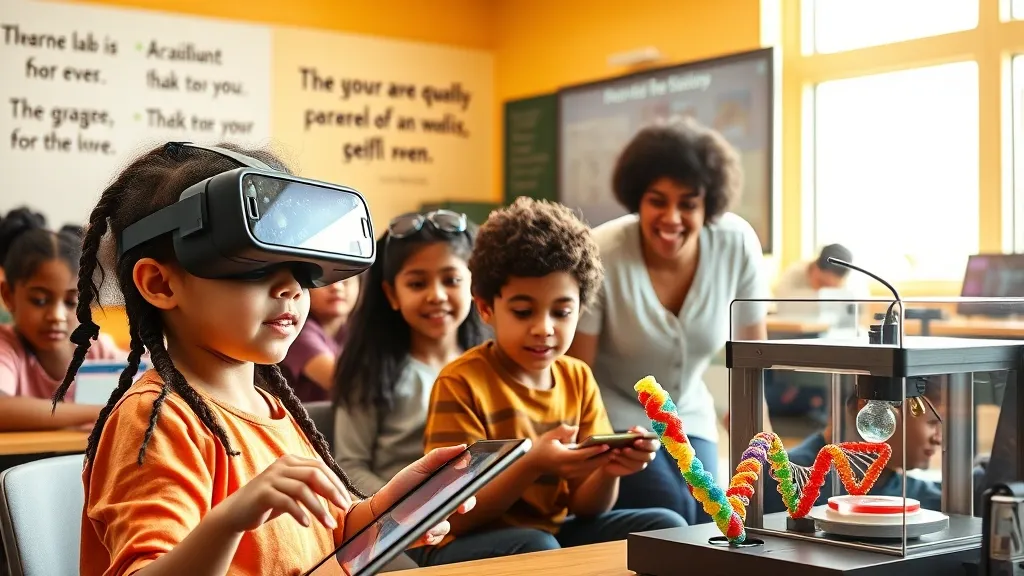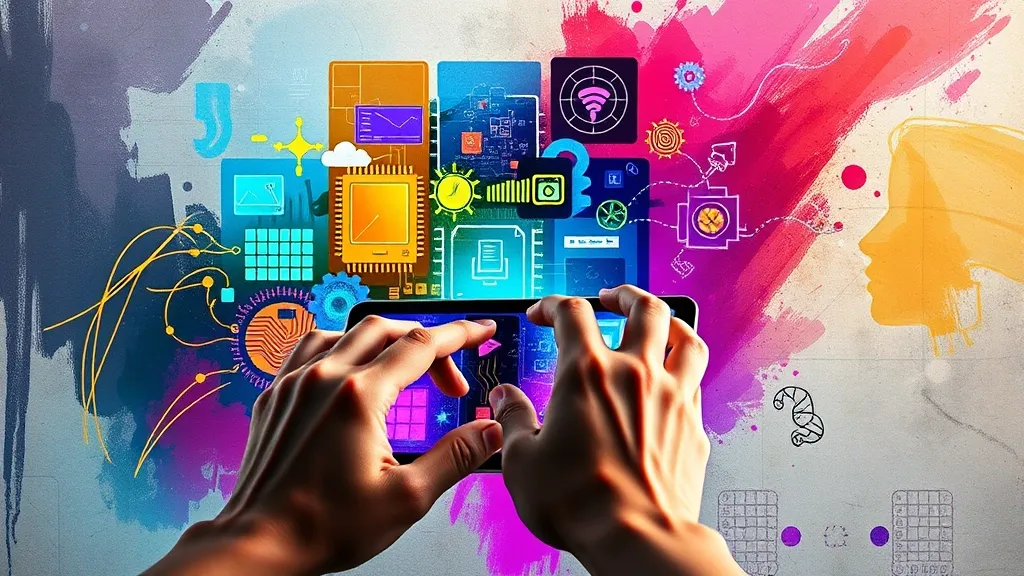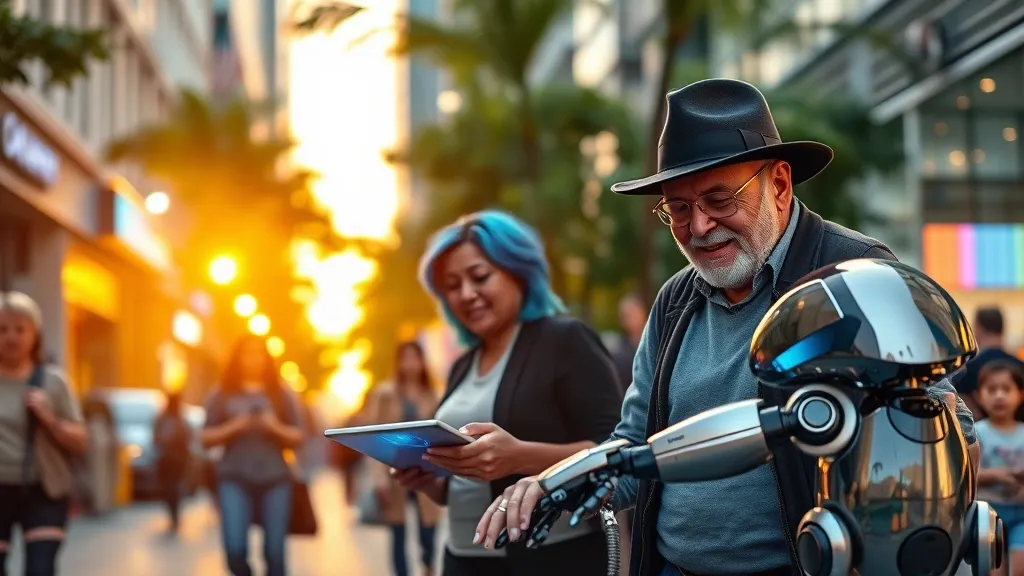From Sci-Fi to Stethoscopes: The Rise of AI in Diagnosis
So, let’s talk about AI in healthcare. It kinda feels like we’ve jumped straight outta a sci-fi movie, right? I mean, who would’ve thought that algorithms and machine learning would join forces with doctors and nurses to make diagnosis smarter? It’s like something out of Star Trek, except instead of Captain Kirk, we’ve got doctors in scrubs and a bunch of data points.
AI’s really changing the game when it comes to diagnosing diseases. It’s not just about some fancy robot doing all the work; it’s more like a supercharged assistant that helps healthcare professionals make better decisions faster. Imagine having a buddy who’s read every medical journal and can analyze tons of patient data in the blink of an eye. That’s AI for you!
- Speed: AI can analyze symptoms and lab results way quicker than a human ever could. This means patients get diagnosed faster, which is a big deal, especially in emergencies.
- Accuracy: With machine learning, AI gets better the more it’s used. It’s like that friend who finally learns to fold laundry after the fifth time. Over time, AI improves its diagnostic accuracy, reducing human error.
- Data Crunching: It can sift through mountains of medical records, helping identify patterns that might be missed otherwise. It’s like a treasure hunt for clues that lead to a correct diagnosis!
And you know what? It’s not just for the big stuff like cancer or heart disease. AI is also making strides in areas like mental health, where it can help identify signs of depression or anxiety based on language patterns in texts or speech. I mean, how cool is that? It’s like having a therapist who’s always on call, minus the coffee breaks.
Of course, there are some folks out there who are a bit skeptical about all this. And I get it; the idea of AI in healthcare raises some eyebrows. But think about it: AI isn’t meant to replace doctors. It’s more like a sidekick, helping them make decisions with more info at their fingertips. Plus, who wouldn’t want a little extra help when it comes to diagnosing something as important as our health?
In the end, AI is proving to be a powerful ally in the healthcare field. It’s exciting to think about where this tech is headed. Maybe someday, we’ll have AI that can not only diagnose but also crack a joke or two. Now that would be a real game-changer!
Wearable Wizards: How Tech is Making Health Personal
You know those sleek fitness trackers and smartwatches that everyone seems to be wearing these days? They’re not just for showing off how many steps you took during that Netflix binge. Seriously, these little gadgets are like having a mini doctor on your wrist, helping you keep tabs on your health in real-time. Talk about a game changer!
Wearable technology is basically a superhero in the healthcare world. It’s all about making health personal and accessible. We’ve got devices that can monitor heart rates, track sleep patterns, and even gauge stress levels. I mean, who knew your wrist could tell you when you’re about to lose it during a Zoom call?
One of the coolest things about wearables is how they empower us to take control of our health. Instead of waiting for a doctor’s appointment to figure out if you’re doing okay, you can check your stats anytime. It’s like having your own health coach, minus the yelling and the protein shakes. Plus, with all the data they collect, you can see patterns in your health that you might not even be aware of. Like, did you know your heart rate spikes every time you see your in-laws? Now you do!
- Heart Rate Monitors: These track your heartbeat and can alert you if something seems off. Who needs a doctor when you’ve got a watch screaming at you to chill out?
- Sleep Trackers: They analyze your sleep cycles, helping you figure out if you’re getting enough Zs or just tossing and turning like a pretzel.
- Activity Trackers: They motivate you to move more. And hey, if you need an excuse to take a break from work, just blame it on your tracker demanding those steps!
And let’s not forget about the advanced tech that’s emerging. We’ve got wearables that can even monitor glucose levels for diabetics or track hydration levels. I mean, next thing you know, we’ll have devices that remind us to breathe. Oh wait, that’s probably already in the works!
In the end, it’s all about making health a priority without all the fuss. Wearables are not just a trend; they’re revolutionizing how we manage our wellbeing, one step (or heartbeat) at a time. So, if you don’t have one yet, what are you waiting for? Just think of it as a little buddy that’s always got your back—just don’t forget to charge it!
Telemedicine: Breaking Down Walls and Building Connections
So, let’s talk telemedicine. You know, the thing that lets you see your doctor without having to sit in an exam room full of weird posters and that one creepy plastic model of a human body. Seriously, who thought that was a good idea? Anyway, telemedicine is like the superhero of healthcare right now, swooping in to save the day, especially when life gets hectic.
Imagine you’re feeling under the weather, but you’ve got a million things to do—kids to take care of, work deadlines, and maybe even a Netflix binge you’re not ready to pause. Instead of dragging yourself to a clinic and waiting forever, you can just hop on a video call with your doctor. It’s convenient, it’s fast, and let’s be honest, you can do it in your pajamas. Win-win!
One of the coolest things about telemedicine is that it really breaks down barriers. No more long drives to the doctor’s office or trying to find parking while feeling like a zombie. Plus, for folks in rural areas or those with mobility issues, this tech is a game-changer. They can finally access healthcare without feeling like they have to trek through the wilderness to see a specialist.
- Accessibility: Telemedicine opens doors for people who might otherwise struggle to get care.
- Time-saving: Who doesn’t want to skip the waiting room and just get to the point?
- Comfort: Being at home makes it easier to talk about sensitive health issues.
Of course, it’s not all rainbows and unicorns. There are still some kinks to work out, like tech issues or the fact that some people just really prefer face-to-face interactions. I mean, it’s hard to get a proper “how are you?” when you’re staring at a screen. But as we keep pushing the envelope, I truly think telemedicine will keep evolving and improving.
In short, telemedicine is not just about convenience; it’s about building real connections. It’s like having your healthcare provider on speed dial, ready to help you out when you need it most. So next time you’ve got a question about your health, remember that you don’t have to leave your cozy spot on the couch. Just grab your phone and connect—your doctor is just a click away!
The Future is Now: Innovations That Will Shape Tomorrow’s Care
You know, sometimes it feels like we’re living in a sci-fi movie. I mean, who would’ve thought that we’d be using robots and AI to help doctors and patients? Seriously, if you told me this stuff would be real when I was a kid, I probably would’ve asked if there were flying cars too. But here we are, and the innovations in healthcare are just wild!
Let’s talk about telemedicine first. This isn’t just a fancy term for video calls with your doc. It’s a game-changer. Imagine being able to chat with your doctor in your pajamas while munching on cereal. No more waiting rooms, no more awkward small talk with strangers. Plus, for folks in rural areas, it’s a lifesaver. They can connect with specialists without traveling for hours. It’s like having a doctor in your pocket—kinda cool, right?
Then there’s artificial intelligence. AI is doing some heavy lifting in diagnostics and patient care. Algorithms can analyze medical images faster than a human can blink, spotting things that might go unnoticed. I mean, it’s like having super-sight! And with machine learning, these systems are only getting smarter. Sure, it’s a little intimidating to think about robots making medical decisions, but they’re here to assist, not replace our beloved healthcare heroes.
- Wearable Tech: Ever seen those fitness trackers? They’re just the tip of the iceberg. We’re talking about wearables that monitor everything from heart rates to glucose levels. It’s like having a mini-doctor on your wrist! And the best part? They can alert you before something goes wrong. You basically get a heads-up on your health. How cool is that?
- 3D Printing: This is where it gets really futuristic. 3D printing is being used to create everything from prosthetics to organs. Yes, you read that right—organs! Imagine having a replacement organ made just for you. It’s like custom tailoring but for your insides. I mean, if that’s not amazing, I don’t know what is!
- Virtual Reality: This one’s for the gamers out there. VR isn’t just for playing; it’s being used for patient therapy and surgical training. Surgeons can practice complex procedures in a virtual world before they ever touch a real patient. It’s like “The Sims” but with real-life stakes!
In a nutshell, the future of healthcare is bright and full of possibilities. Who knows what other innovations are lurking just around the corner? All I know is, I’m excited to see how these technologies will shape our care in the coming years. So, buckle up; it’s gonna be a wild ride!



